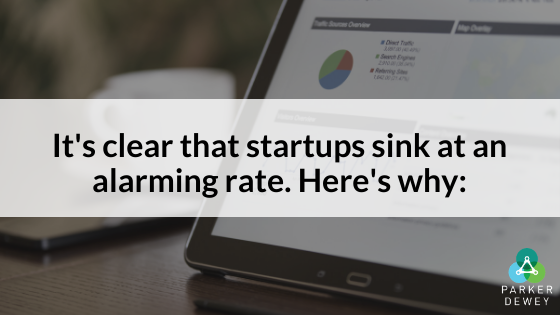.png)
Are you burning hours on tasks that aren't the best use of your time?
On LinkedIn last week, I opened a poll:
It always felt like I had too many things on my plate, or was spending time working on things that weren't the best use of my time.
I also worried about my team being in the same situation.
Do you have any tasks that aren’t the best use of your time?
Do you have tasks that require hours in the day you just can’t spare?
Or, is your team already perfectly optimized?
What’s your answer? Check out my post to weigh in and see what others had to say.
(P.S. If you’re feeling overwhelmed by your workload right now, you’re not the only one. Visit our example project library for some ideas of projects college students and recent graduates can complete with minimal onboarding.)
Jeffrey Moss, Founder and CEO
Articles of the Week
Webinar Recap: The Gig Economy’s Impact on Campus Recruiting - Parker Dewey
6 Ways Diversity And Inclusion Impact The Cost And Effectiveness Of Recruiting - Forbes
The Sample Behaviors That Provide Evidence of Career Readiness - NACE
3 Major Culture Risks When Hiring at Scale — and How to Address Them - LinkedIn Talent Blog
Webinar Recap: The Gig Economy’s Impact on Campus Recruiting - Parker Dewey
“As the professional landscape continues to evolve against the backdrop of the pandemic, busy teams are increasingly relying on independent contractors for on-demand support: Forbes reports that gig workers represented around 35% of the U.S. workforce in 2020.
The benefits of gig work for both students and organizations are many—and for campus recruiters, sourcing candidates through the gig economy often results in more than just getting the work done. This recap includes key takeaways from our webinar on how companies are embracing the gig economy not as a replacement for summer interns or full-time hires, but rather as a pathway to enhance access, diversity initiatives, student engagement, relationship development, and hiring and retention outcomes.
Related reading: What are “Growth Gigs”? (and why they’re perfect for college students and recent grads)
6 Ways Diversity And Inclusion Impact The Cost And Effectiveness Of Recruiting - Forbes
“Companies often complain that one of the reasons for the lackluster increase in diversity is the 'pipeline problem,”'i.e., the difficulty of finding sufficient talent from diverse backgrounds, especially for certain highly skilled positions. [...] I believe that the pipeline problem is greatly exaggerated, and that it is largely an artifact of the way companies go about recruiting talent, combined with a lack of understanding of how a company’s current levels of diversity and inclusion hamper its efforts to recruit talent.”
In order to be hired, a candidate must go through six different stages—our actions and behaviors influence the possibility that candidates from diverse backgrounds make it through each stage. This article breaks down the stages, plus the compounding effects of DEI.
Related reading: On Building a Diverse Talent Pipeline
The Sample Behaviors That Provide Evidence of Career Readiness - NACE
"Recent NACE research shows that employers are seeking to hire candidates with an ability to work in a team, and with strong problem-solving, analytical, and communication skills.”
A review by NACE’s Career Competencies Task Force suggests that students will be set up for better success in the workforce by exercising and developing specific skills and behaviors—ahead of gaining employment. This piece summarizes those top sample behaviors and why they’re significant for students and recent graduates.
Related reading: Why “Soft Skills” are Core Skills
3 Major Culture Risks When Hiring at Scale — and How to Address Them - LinkedIn Talent Blog
“We need to transition our thinking from culture fit to culture add. We need to explicitly — and with a prescriptive tone — communicate that we want talent that isn’t just carbon copies of our existing teams, that we don’t want a monoculture. During our strategy meetings and candidate/interview debrief meetings we — as Talent Advisors — need to make sure we’re not just hiring the same profile. We need to make the case against homogeneity. “
Organizations are experiencing growth spurts right now. And while “scaling up is generally fun,” it can easily have an adverse effect on a company’s DEI efforts. This post explores what happens when new people hire new people, how hiring at scale can negatively reinforce culture fit, and how companies can mitigate the risks that come with scaling up in large numbers.
Related reading: Gearing Up for Growth: Where to Start When You’re Ready to Recruit
For more stories and insights on HR, recruiting, and diversity, click here to subscribe to our weekly newsletter Hire Learnings.



.png)
